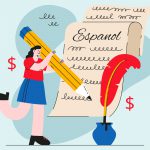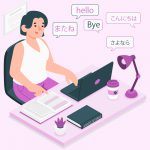When looking for quality freelance Japanese to English translators, it’s essential to understand why it is so hard to translate Japanese to English. The language’s complexity and cultural nuances often make it a challenging task, which may increase the cost of having content translated.
The most common pricing method you will encounter is the price per word, which ranges from $0.08 to $0.50. Several factors, including the length of the document, the subject matter, and any special requirements, influence this rate.
For instance, documents that involve legal or medical terms will typically be more expensive to translate due to the expertise required. Additionally, official documents often require a certified translation or notarization, which can also impact the cost. Understanding these factors is crucial to accurately estimating the cost of your translation project and ensuring you receive the best value for your money.
Guru is a reliable platform that many people use to find experienced freelance translators. You can easily connect with professionals who can translate Japanese to English and who have the necessary skills to provide accurate and culturally sensitive translations. Its user-friendly interface and secure payment system make Guru stand out from other platforms.
What Are the Different Pricing Models?
Translators use various pricing models to charge for their services. The right one depends on the nature of the project, its requirements, and the translator’s preferences.
Per Word
This is the most common pricing model in the industry, with translators charging a rate based on each word translated. It provides transparency and clients know the cost upfront; however, it may not always reflect the time and effort required for a translation, especially for complex or highly technical texts.
While it is easier to calculate the cost upfront using this pricing model, it can also prompt the translator to rush, potentially affecting quality. Always provide a well-edited and concise document. If you are charged for each word, unnecessary content will increase the price.
Per Hour
Some translators charge for the actual time spent working on a project. This model may be more suitable for complex or specialized translations, where the translator must spend more time researching, editing, or formatting. It may also be preferred for projects that involve machine translation and post-editing because the word count may not accurately reflect the work involved.
However, estimating the cost upfront can be tricky, and the translator might work more slowly to maximize earnings. Provide a well-organized and clearly formatted document to help reduce the time the translator spends on understanding, organizing, and formatting the text.
Flat Fee
A fixed price is the amount agreed upon for the entire project, regardless of the word count, complexity, or actual time spent. This model may be preferred for small or one-off projects or when the client has a fixed budget. It is usually easy to allocate money, and there are no surprises in the cost.
One downside is that it is less flexible if there are changes or additions to the project. Understand what is included in the flat fee (e.g., editing, formatting) and negotiate any additional services upfront.
Minimum Charge
A minimum fee is applied for small projects that may not justify the time and effort required for invoicing, administration, and other overhead. Bundle small projects together if possible. If several small translations are needed, having them all done at once may be more cost-effective to avoid multiple minimum charges.
What to Avoid When Hiring a Freelancer
Here are a few more tips to keep in mind when evaluating freelancers for a project:
Going for the Cheapest Option
While it’s tempting to save money by choosing the cheapest option, this often results in poor-quality translations. The most affordable translators may not be as experienced or skilled as you need them to be, leading to mistakes, inaccuracies, or awkward phrasing in the translation.
Consider the value of the translation and the potential cost of errors. A high-quality translation may be worth paying a bit more for, especially for important or high-visibility documents.
Not Checking Credentials
It’s essential to check the translator’s credentials, ask for references, and verify their experience and specialization in your field. Translators may have different levels of proficiency in different subjects, and a translator experienced in technical documents may not be the best choice for literary translation.
Ask for references or samples of previous work in your field. Check the translator’s qualifications (such as JLPT or TOEIC scores) and any relevant certifications or degrees.
Ignoring Cultural Nuances
A good translator doesn’t just translate words–they also translate cultural nuances. Japanese and English have many cultural differences, and a translator needs to have a deep understanding of the culture of both the source and target languages to convey the meaning and tone of the text accurately. Ask the translator about their experience with the culture of both languages and any relevant cultural training or education they have received.
The Platform With Quality Translators
Guru is a trusted platform connecting you with experienced freelance Japanese to English translators. Not only will you have access to a global pool of talent, but we also ensure secure payments, flexible agreements, and the ability to track a freelancer’s progress!



